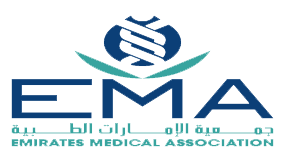Where Does Fat Go After Liposuction?
What is Liposuction?
Liposuction is a cosmetic surgical procedure designed to remove excess fat from specific areas of the body. It is often sought by individuals looking to contour and shape their bodies when diet and exercise have not yielded the desired results. The procedure involves the use of a suction technique to extract fat cells from targeted areas.
How Liposuction Works
Liposuction works by inserting a thin tube, called a cannula, through small incisions in the skin. The cannula is connected to a vacuum that suctions out the fat cells. The procedure can be performed under local or general anesthesia, depending on the extent of the fat removal and the patient’s preference.
Types of Liposuction Procedures
There are several types of liposuction procedures, each with its unique approach:
- Tumescent Liposuction : Involves injecting a solution to numb the area and shrink blood vessels before fat removal.
- Ultrasound-Assisted Liposuction (UAL) : Uses ultrasonic vibrations to liquefy fat cells, making them easier to remove.
- Laser-Assisted Liposuction (LAL) : Employs laser energy to liquefy fat cells.
- Power-Assisted Liposuction (PAL) : Utilizes a vibrating cannula to break up fat cells.
The Fate of Fat Cells After Liposuction
Where Does Fat Go After Liposuction?
When you have liposuction, where does the fat go? The fat cells removed during liposuction are permanently extracted from the body. These cells are suctioned out and collected in a sterile container, ensuring they do not re-enter the body.
Book A Consultation With Dr Shehzadi Tasneem
Top-rated Plastic Surgeon For Liposuction in Dubai
Installment Plan Available
What Happens to the Removed Fat?
After liposuction, the removed fat is typically disposed of as medical waste. In some cases, the fat can be purified and used for fat transfer procedures, where it is injected into other areas of the body to enhance volume.
Is the Fat Permanently Gone?
Yes, the fat cells removed during liposuction are permanently gone. However, it is essential to maintain a healthy lifestyle to prevent the remaining fat cells from expanding.
- Permanent Removal : The extracted fat cells do not regenerate.
- Healthy Lifestyle : Maintaining results requires a balanced diet and regular exercise.
- Fat Redistribution : Weight gain can cause fat to accumulate in other areas.
Can Fat Return After Liposuction? 
Possibility of Fat Regrowth
While the fat cells removed during liposuction are permanently gone, new fat cells can develop if you gain weight. The remaining fat cells in the body can also expand, leading to an increase in fat volume.
Factors Influencing Fat Return
Several factors can influence the return of fat after liposuction:
- Diet : Consuming a high-calorie diet can lead to weight gain.
- Exercise : Lack of physical activity can contribute to fat accumulation.
- Genetics : Genetic predisposition can affect fat distribution and regrowth.
Areas Prone to Fat Return
Fat can return to various areas of the body, but it is less likely to accumulate in the treated areas. Common areas prone to fat return include:
- Abdomen : Fat may accumulate in the abdominal region.
- Thighs : The inner and outer thighs can be susceptible to fat return.
- Arms : Fat may return to the upper arms.
Maintenance Tips: How to Keep Your Liposuction Results
Healthy Diet and Nutrition
Maintaining a healthy diet is crucial for preserving liposuction results. Focus on consuming nutrient-dense foods and avoiding high-calorie, processed foods.
- Balanced Diet : Include a variety of fruits, vegetables, lean proteins, and whole grains.
- Hydration : Drink plenty of water to stay hydrated and support metabolism.
- Portion Control : Practice portion control to avoid overeating.
Regular Exercise
Incorporating regular exercise into your routine helps maintain liposuction results by preventing weight gain and promoting overall health.
- Cardio Workouts : Engage in cardiovascular exercises like running, swimming, or cycling.
- Strength Training : Include strength training exercises to build muscle and boost metabolism.
- Consistency : Aim for at least 150 minutes of moderate exercise per week.
Lifestyle Changes for Long-Term Results
Adopting healthy lifestyle changes can help you maintain your liposuction results in the long term.
- Stress Management : Practice stress-reducing activities like yoga or meditation.
- Sleep : Ensure you get adequate sleep to support overall health.
- Avoid Smoking : Smoking can negatively impact your health and recovery.
Recovery and Aftercare Post-Liposuction
Immediate Post-Procedure Care
Proper care immediately after liposuction is essential for a smooth recovery.
- Compression Garments : Wear compression garments to reduce swelling and support healing.
- Rest : Allow your body to rest and recover.
- Hydration : Drink plenty of water to stay hydrated.
Long-Term Recovery Tips
Long-term recovery involves maintaining healthy habits and monitoring your progress.
- Follow-Up Appointments : Attend all follow-up appointments with your surgeon.
- Healthy Lifestyle : Continue with a healthy diet and regular exercise.
- Monitor Healing : Keep an eye on the treated areas for any changes or concerns.
When to Contact Dr. Shehzadi Tasneem Sultan
Contact Dr. Shehzadi Tasneem Sultan if you experience any of the following:
- Severe Pain : Unmanageable pain that does not improve with medication.
- Signs of Infection : Redness, swelling, or discharge from the incision sites.
- Unusual Symptoms : Any other unusual symptoms or concerns.
Liposuction Treatment Areas
Common Areas for Liposuction
Liposuction can be performed on various areas of the body to remove excess fat.
- Abdomen : Commonly treated to achieve a flatter stomach.
- Thighs : Inner and outer thighs can be contoured.
- Hips : Fat removal from the hips can enhance body shape.
Specialized Areas: Chin, Arms, Thighs
Liposuction can also target specialized areas for more precise contouring.
- Chin : Removal of fat under the chin to reduce a double chin.
- Arms : Contouring of the upper arms for a more toned appearance.
- Thighs : Targeting specific areas of the thighs for better leg shape.
Who is a Candidate for Liposuction?
Ideal Candidates
Ideal candidates for liposuction are individuals who meet the following criteria:
- Good Health : Overall good health with no serious medical conditions.
- Stable Weight : Maintaining a stable weight for an extended period.
- Realistic Expectations : Having realistic expectations about the results.
Who Should Avoid Liposuction?
Certain individuals should avoid liposuction due to potential risks and complications.
- Pregnant Women : Liposuction is not recommended during pregnancy.
- Severe Health Conditions : Individuals with severe health conditions should avoid the procedure.
- Unrealistic Expectations : Those with unrealistic expectations about the results.
Pre-Procedure Considerations
Before undergoing liposuction, consider the following: Lipo laser procedure steps include placing laser pads on the skin to break down fat cells and then the body naturally removes the fat cells Liposuction results timeline shows how your body changes after the procedure You may see initial results in a few weeks but full results can take several months
- Medical History : Provide a complete medical history to your surgeon.
- Medications : Inform your surgeon about any medications you are taking.
- Lifestyle : Discuss your lifestyle and goals with your surgeon.
Liposuction vs. Other Fat Reduction Methods
Liposuction vs. Tummy Tuck
Liposuction and tummy tuck are both body contouring procedures, but they have different purposes.
- Liposuction : Focuses on removing excess fat from specific areas.
- Tummy Tuck : Involves removing excess skin and tightening abdominal muscles.
Non-Invasive Fat Reduction Options
Non-invasive fat reduction options are available for those who prefer not to undergo surgery.
- CoolSculpting : Uses cold temperatures to freeze and destroy fat cells.
- Ultrasound Therapy : Employs ultrasound waves to break down fat cells.
- Radiofrequency Therapy : Uses radiofrequency energy to target fat cells.
Comparing Effectiveness and Results
When comparing liposuction to other fat reduction methods, consider the following:
- Effectiveness : Liposuction provides more immediate and noticeable results.
- Recovery Time : Non-invasive methods typically have shorter recovery times.
- Results : Liposuction results are more dramatic and long-lasting.
FAQs
Where Does Fat Go After Liposuction?
The fat removed during liposuction is permanently extracted from the body and disposed of as medical waste. This ensures that the fat cells do not re-enter the body.
When You Have Liposuction Where Does the Fat Go?
When you have liposuction, the fat cells are suctioned out and collected in a sterile container. The removed fat is then disposed of according to medical waste protocols.
After Liposuction Where Does the Fat Go?
After liposuction, the fat cells are permanently removed from the body. They are collected during the procedure and disposed of as medical waste.
Where Does Liposuction Fat Go?
Liposuction fat is collected in a sterile container during the procedure and then disposed of as medical waste. In some cases, the fat can be purified and used for fat transfer procedures.
Liposuction Where Does the Fat Go?
The fat removed during liposuction is permanently gone from the treated areas. However, maintaining a healthy lifestyle is essential to prevent fat from accumulating in other areas of the body.












